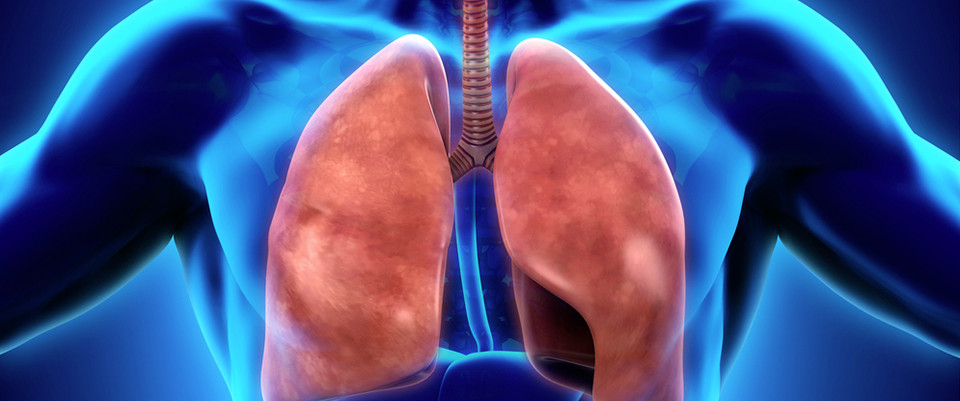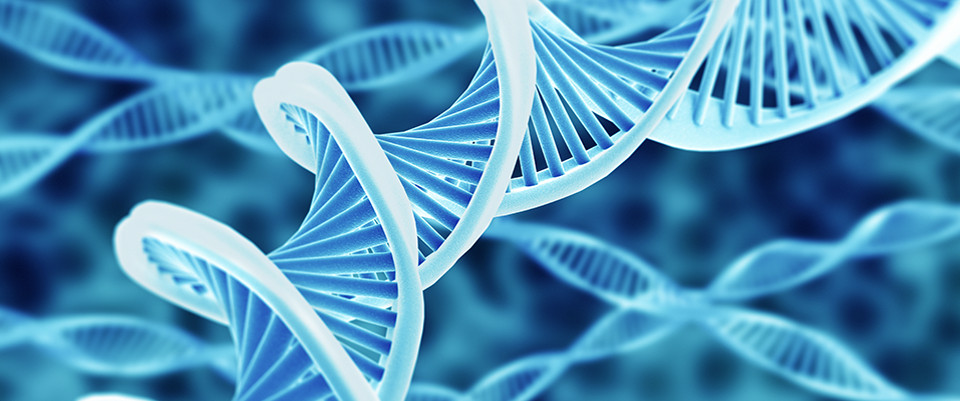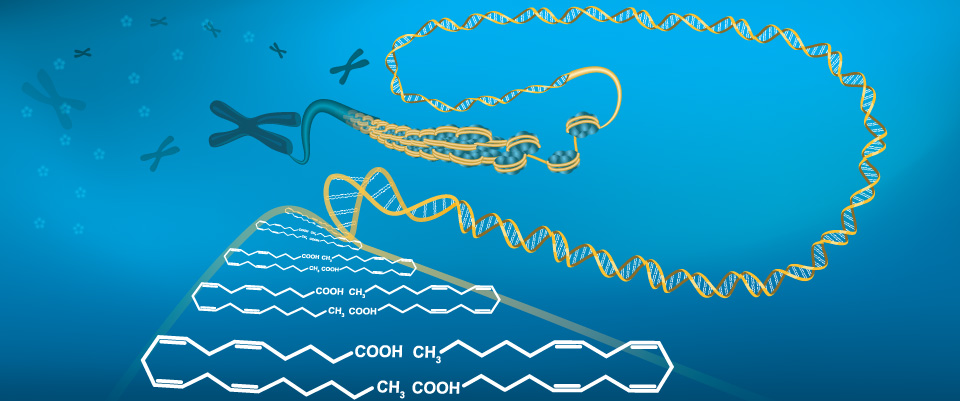PubMed
Towards biomarker-based tests that can facilitate decisions about prevention and management of preeclampsia in low-resource settings.
Towards biomarker-based tests that can facilitate decisions about prevention and management of preeclampsia in low-resource settings.
Clin Chem Lab Med. 2015 May 20;
Authors: Acestor N, Goett J, Lee A, Herrick TM, Engelbrecht SM, Harner-Jay CM, Howell BJ, Weigl BH
Abstract
In recent years, an increasing amount of literature is emerging on candidate urine and blood-based biomarkers associated with incidence and severity of preeclampsia (PE) in pregnant women. While enthusiasm on the usefulness of several of these markers in predicting PE is evolving, essentially all work so far has focused on the needs of high-resource settings and high-income countries, resulting primarily in multi-parameter laboratory assays based on proteomic and metabolomics analysis techniques. These highly complex methods, however, require laboratory capabilities that are rarely available or affordable in low-resource settings (LRS). The importance of quantifying maternal and perinatal risks and identifying which pregnancies can be safely prolonged is also much greater in LRS, where intensive care facilities that can rapidly respond to PE-related health threats for women and infants are limited. For these reasons, simple, low cost, sensitive, and specific point-of-care (POC) tests are needed that can be performed by antenatal health care providers in LRS and that can facilitate decisions about detection and management of PE. Our study aims to provide a comprehensive systematic review of current and emerging blood and urine biomarkers for PE, not only on the basis of their clinical performance, but also of their suitability to be used in LRS-compatible test formats, such as lateral flow and other variants of POC rapid assays.
PMID: 25992513 [PubMed - as supplied by publisher]
Metabolomic and lipidomic analyses of chronologically aging yeast.
Related Articles
Metabolomic and lipidomic analyses of chronologically aging yeast.
Methods Mol Biol. 2014;1205:359-73
Authors: Richard VR, Bourque SD, Titorenko VI
Abstract
Metabolomic and lipidomic analyses of yeast cells provide comprehensive empirical datasets for unveiling mechanisms underlying complex biological processes. In this chapter, we describe detailed protocols for using such analyses to study the age-related dynamics of changes in intracellular and extracellular levels of various metabolites and membrane lipids in chronologically aging yeast. The protocols for the following high-throughput analyses are described: (1) microanalytic biochemical assays for monitoring intracellular concentrations of trehalose and glycogen; (2) gas chromatographic quantitative assessment of extracellular concentrations of ethanol and acetic acid; and (3) mass spectrometric identification and quantitation of the entire complement of cellular lipids. These protocols are applicable to the exploration of the metabolic patterns associated not only with aging but also with many other vital processes in yeast. The described here methodology complements the powerful genetic approaches available for mechanistic studies of fundamental aspects of yeast biology.
PMID: 25213255 [PubMed - indexed for MEDLINE]
Comparative metabolomic analysis of wild type and mads3 mutant rice anthers.
Related Articles
Comparative metabolomic analysis of wild type and mads3 mutant rice anthers.
J Integr Plant Biol. 2014 Sep;56(9):849-63
Authors: Qu G, Quan S, Mondol P, Xu J, Zhang D, Shi J
Abstract
Rice (Oryza sativa L.) MADS3 transcription factor regulates the homeostasis of reactive oxygen species (ROS) during late anther development, and one MADS3 mutant, mads3-4, has defective anther walls, aborted microspores and complete male sterility. Here, we report the untargeted metabolomic analysis of both wild type and mads3-4 mature anthers. Mutation of MADS3 led to an unbalanced redox status and caused oxidative stress that damages lipid, protein, and DNA. To cope with oxidative stress in mads3-4 anthers, soluble sugars were mobilized and carbohydrate metabolism was shifted to amino acid and nucleic acid metabolism to provide substrates for the biosynthesis of antioxidant proteins and the repair of DNA. Mutation of MADS3 also affected other aspects of rice anther development such as secondary metabolites associated with cuticle, cell wall, and auxin metabolism. Many of the discovered metabolic changes in mads3-4 anthers were corroborated with changes of expression levels of corresponding metabolic pathway genes. Altogether, this comparative metabolomic analysis indicated that MADS3 gene affects rice anther development far beyond the ROS homeostasis regulation.
PMID: 25073727 [PubMed - indexed for MEDLINE]
Seed metabolomic study reveals significant metabolite variations and correlations among different soybean cultivars.
Related Articles
Seed metabolomic study reveals significant metabolite variations and correlations among different soybean cultivars.
J Integr Plant Biol. 2014 Sep;56(9):826-36
Authors: Lin H, Rao J, Shi J, Hu C, Cheng F, Wilson ZA, Zhang D, Quan S
Abstract
Soybean [Glycine max (L.) Merr.] is one of the world's major crops, and soybean seeds are a rich and important resource for proteins and oils. While "omics" studies, such as genomics, transcriptomics, and proteomics, have been widely applied in soybean molecular research, fewer metabolomic studies have been conducted for large-scale detection of low molecular weight metabolites, especially in soybean seeds. In this study, we investigated the seed metabolomes of 29 common soybean cultivars through combined gas chromatography-mass spectrometry and ultra-performance liquid chromatography-tandem mass spectrometry. One hundred sixty-nine named metabolites were identified and subsequently used to construct a metabolic network of mature soybean seed. Among the 169 detected metabolites, 104 were found to be significantly variable in their levels across tested cultivars. Metabolite markers that could be used to distinguish genetically related soybean cultivars were also identified, and metabolite-metabolite correlation analysis revealed some significant associations within the same or among different metabolite groups. Findings from this work may potentially provide the basis for further studies on both soybean seed metabolism and metabolic engineering to improve soybean seed quality and yield.
PMID: 24942044 [PubMed - indexed for MEDLINE]
metabolomics; +34 new citations
34 new pubmed citations were retrieved for your search.
Click on the search hyperlink below to display the complete search results:
metabolomics
These pubmed results were generated on 2015/05/20PubMed comprises more than 24 million citations for biomedical literature from MEDLINE, life science journals, and online books.
Citations may include links to full-text content from PubMed Central and publisher web sites.
Stable isotope labeling by amino acids in cell culture based proteomics reveals differences in protein abundances between spiral and coccoid forms of the gastric pathogen Helicobacter pylori.
Stable isotope labeling by amino acids in cell culture based proteomics reveals differences in protein abundances between spiral and coccoid forms of the gastric pathogen Helicobacter pylori.
J Proteomics. 2015 May 12;
Authors: Müller SA, Pernitzsch SR, Haange SB, Uetz P, von Bergen M, Sharma CM, Kalkhof S
Abstract
Helicobacter pylori (H. pylori) is a ε-proteobacterium that colonizes the stomach of about half of the world's population. Persistent infections have been associated with several gastric diseases. Mainly rod- or spiral shaped but also coccoid forms have been isolated from mucus layer biopsies of patients. It is still being debated whether the coccoid form can be transformed back into the spiral form or whether this morphology is a result of bacterial cell death or persistence. We established stable isotope labeling by amino acids in cell culture (SILAC) for quantitative proteomics of H. pylori and applied it to investigate differences between the spiral and the coccoid morphology. We detected 72% and were able to relatively quantify 47% of the H. pylori proteome. Proteins involved in cell division, transcriptional and translational processes showed a lower abundance in coccoid cells. Additionally, proteins related to host colonization, including CagA, the arginase RocF, and the TNF-α inducing protein were down-regulated. The fact that outer membrane proteins were observed at higher abundances might represent a mechanism for immune evasion but also preserves adherence to host cells. The established protocol for relative protein quantification of H. pylori samples offers new possibilities for research on H. pylori. Biological significance Our study shows that SILAC can be employed to study protein abundance changes in H. pylori. We have chosen to establish SILAC for H. pylori because it facilitates fractionation on both, protein and peptide level and thus enables deep proteome coverage. Furthermore, SILAC allows robust and highly accurate protein quantification. The manuscript includes a detailed description of the applied method, suggestions for further improvement as well as a practical application. The investigation of differences between the coccoid and infectious spiral morphology of H. pylori with SILAC revealed the regulation of protein groups that are involved in host colonization, mobility, cell division as well as transcriptional and translational processes. The provided data will help molecular biologist to focus on relevant pathways that were found to be regulated in response morphological changes. Furthermore, the application of SILAC offers new possibilities to study the biology of H. pylori. It enables to monitor protein abundance changes in response to certain stimuli such as oxygen stress or antibiotics. Moreover, SILAC raises the possibility to study co-cultures of host cells and H. pylori on protein level. Additionally, pulsed SILAC experiments enable the quantification of protein turnover.
PMID: 25979772 [PubMed - as supplied by publisher]
Biological properties of extracellular vesicles and their physiological functions.
Biological properties of extracellular vesicles and their physiological functions.
J Extracell Vesicles. 2015;4:27066
Authors: Yáñez-Mó M, Siljander PR, Andreu Z, Zavec AB, Borràs FE, Buzas EI, Buzas K, Casal E, Cappello F, Carvalho J, Colás E, Cordeiro-da Silva A, Fais S, Falcon-Perez JM, Ghobrial IM, Giebel B, Gimona M, Graner M, Gursel I, Gursel M, Heegaard NH, Hendrix A, Kierulf P, Kokubun K, Kosanovic M, Kralj-Iglic V, Krämer-Albers EM, Laitinen S, Lässer C, Lener T, Ligeti E, Linē A, Lipps G, Llorente A, Lötvall J, Manček-Keber M, Marcilla A, Mittelbrunn M, Nazarenko I, Nolte-'t Hoen EN, Nyman TA, O'Driscoll L, Olivan M, Oliveira C, Pállinger É, Del Portillo HA, Reventós J, Rigau M, Rohde E, Sammar M, Sánchez-Madrid F, Santarém N, Schallmoser K, Ostenfeld MS, Stoorvogel W, Stukelj R, Van der Grein SG, Vasconcelos MH, Wauben MH, De Wever O
Abstract
In the past decade, extracellular vesicles (EVs) have been recognized as potent vehicles of intercellular communication, both in prokaryotes and eukaryotes. This is due to their capacity to transfer proteins, lipids and nucleic acids, thereby influencing various physiological and pathological functions of both recipient and parent cells. While intensive investigation has targeted the role of EVs in different pathological processes, for example, in cancer and autoimmune diseases, the EV-mediated maintenance of homeostasis and the regulation of physiological functions have remained less explored. Here, we provide a comprehensive overview of the current understanding of the physiological roles of EVs, which has been written by crowd-sourcing, drawing on the unique EV expertise of academia-based scientists, clinicians and industry based in 27 European countries, the United States and Australia. This review is intended to be of relevance to both researchers already working on EV biology and to newcomers who will encounter this universal cell biological system. Therefore, here we address the molecular contents and functions of EVs in various tissues and body fluids from cell systems to organs. We also review the physiological mechanisms of EVs in bacteria, lower eukaryotes and plants to highlight the functional uniformity of this emerging communication system.
PMID: 25979354 [PubMed - as supplied by publisher]
metabolomics; +18 new citations
18 new pubmed citations were retrieved for your search.
Click on the search hyperlink below to display the complete search results:
metabolomics
These pubmed results were generated on 2015/05/13PubMed comprises more than 24 million citations for biomedical literature from MEDLINE, life science journals, and online books.
Citations may include links to full-text content from PubMed Central and publisher web sites.
metabolomics; +24 new citations
24 new pubmed citations were retrieved for your search.
Click on the search hyperlink below to display the complete search results:
metabolomics
These pubmed results were generated on 2015/05/12PubMed comprises more than 24 million citations for biomedical literature from MEDLINE, life science journals, and online books.
Citations may include links to full-text content from PubMed Central and publisher web sites.
Metabolomics in cardiovascular diseases.
Related Articles
Metabolomics in cardiovascular diseases.
J Pharm Biomed Anal. 2015 Apr 25;
Authors: Kordalewska M, Markuszewski MJ
Abstract
Cardiovascular diseases (CVDs) are the main cause of death globally. There is a need for the development of specific diagnostic methods, more effective therapeutic procedures as well as drugs, which can decrease the risk of deaths in the course of CVDs. For this reason, better understanding and explanation of molecular pathomechanisms of CVDs are essential. Metabolomics is focused on analysis of metabolites, small molecules which reflect the state of an organism in a certain point of time. Application of metabolomics approach in the investigation of molecular processes responsible for CVDs development may provide valuable information. In this article we overviewed recent reports employing application of untargeted and targeted metabolomic analyses in particular CVDs. Moreover, we focused on applications of various analytical platforms and metabolomics approaches which may contribute to the explanation of the pathomechanisms of different cardiovascular diseases.
PMID: 25958299 [PubMed - as supplied by publisher]
Chemical communication in the gut: Effects of microbiota-generated metabolites on gastrointestinal bacterial pathogens.
Related Articles
Chemical communication in the gut: Effects of microbiota-generated metabolites on gastrointestinal bacterial pathogens.
Anaerobe. 2015 May 6;
Authors: Vogt SL, Peña-Díaz J, Finlay BB
Abstract
Gastrointestinal pathogens must overcome many obstacles in order to successfully colonize a host, not the least of which is the presence of the gut microbiota, the trillions of commensal microorganisms inhabiting mammals' digestive tracts, and their products. It is well established that a healthy gut microbiota provides its host with protection from numerous pathogens, including Salmonella species, Clostridium difficile, diarrheagenic Escherichia coli, and Vibrio cholerae. Conversely, pathogenic bacteria have evolved mechanisms to establish an infection and thrive in the face of fierce competition from the microbiota for space and nutrients. Here, we review the evidence that gut microbiota-generated metabolites play a key role in determining the outcome of infection by bacterial pathogens. By consuming and transforming dietary and host-produced metabolites, as well as secreting primary and secondary metabolites of their own, the microbiota define the chemical environment of the gut and often determine specific host responses. Although most gut microbiota-produced metabolites are currently uncharacterized, several well-studied molecules made or modified by the microbiota are known to affect the growth and virulence of pathogens, including short-chain fatty acids, succinate, mucin O-glycans, molecular hydrogen, secondary bile acids, and the AI-2 quorum sensing autoinducer. We also discuss challenges and possible approaches to further study of the chemical interplay between microbiota and gastrointestinal pathogens.
PMID: 25958185 [PubMed - as supplied by publisher]
Liver functional metabolomics discloses an action of L-leucine against Streptococcus iniae infection in tilapias.
Related Articles
Liver functional metabolomics discloses an action of L-leucine against Streptococcus iniae infection in tilapias.
Fish Shellfish Immunol. 2015 May 6;
Authors: Ma YM, Yang MJ, Wang S, Li H, Peng XX
Abstract
Streptococcus iniae seriously affects the intensive farming of tilapias. Much work has been conducted on prevention and control of S. iniae infection, but little published information on the metabolic response is available in tilapias against the bacterial infection, and no metabolic modulation way may be adopted to control this disease. The present study used GC/MS based metabolomics to characterize the metabolic profiling of tilapias infected by a lethal dose (LD50) of S. iniae and determined two characteristic metabolomes separately responsible for the survival and dying fishes. A reversal changed metabolite, decreased and increased L-leucine in the dying and survival groups, respectively, was identified as a biomarker which featured the difference between the two metabolomes. More importantly, exogenous L-leucine could be used as a metabolic modulator to elevate survival ability of tilapias infected by S. iniae. These results indicate that tilapias mount metabolic strategies to deal with bacterial infection, which can be regulated by exogenous metabolites such as L-leucine. The present study establishes an alternative way, metabolic modulation, to cope with bacterial infections.
PMID: 25957884 [PubMed - as supplied by publisher]
Tissue-specific metabolite profiling of Turmeric by using laser micro-dissection, ultra-high performance liquid chromatography-quadrupole time of fight-mass spectrometry and liquid chromatography-tandem mass spectrometry.
Related Articles
Tissue-specific metabolite profiling of Turmeric by using laser micro-dissection, ultra-high performance liquid chromatography-quadrupole time of fight-mass spectrometry and liquid chromatography-tandem mass spectrometry.
Eur J Mass Spectrom (Chichester, Eng). 2014;20(5):383-93
Authors: Jaiswal Y, Liang Z, Ho A, Chen H, Zhao Z
Abstract
Curcuma longa L. is recognized for its therapeutic and culinary uses both in Ayurveda and traditional Chinese medicine and is considered to be a boon to mankind. It has been extensively studied for its benefits and still continues to be an important drug with continued potential for further exploration and research. We studied the tissue-specific distribution of secondary metabolites to establish the validity of the use of rhizome samples from India and China, as substitutes for each other, based upon their metabolite profiles and curcumin contents. Laser microdissection was used for the isolation of microscopic tissues, such as cork, cortex and leaf-trace vascular bundles from rhizomes. Metabolite profiling was carried out by ultra-high performance liquid chromatography-quadrupole time of fight-mass spectrometry and curcumin content was estimated by a method validated as per the Harmonized Tripartite Guidelines. The cortex and cork revealed the presence of a higher number of secondary metabolites than in the leaf-trace vascular bundles. The curcumin contents in rhizome samples from both the countries, estimated with the help of a precise and accurate validated method, were found to be comparable. Based on the results, we conclude that turmeric rhizomes grown in India and China are qualitatively and quantitatively indistinguishable and therefore can be used as substitutes. The developed method can be widely applied for microscopic identification, authentication and analysis of the distribution of phytoconstituents in other botanical species of interest or of species with a significant commercial and therapeutic value.
PMID: 25707128 [PubMed - indexed for MEDLINE]
metabolomics; +24 new citations
24 new pubmed citations were retrieved for your search.
Click on the search hyperlink below to display the complete search results:
metabolomics
These pubmed results were generated on 2015/05/06PubMed comprises more than 24 million citations for biomedical literature from MEDLINE, life science journals, and online books.
Citations may include links to full-text content from PubMed Central and publisher web sites.
A cleavable cytolysin-neuropeptide Y bioconjugate enables specific drug delivery and demonstrates intracellular mode of action.
A cleavable cytolysin-neuropeptide Y bioconjugate enables specific drug delivery and demonstrates intracellular mode of action.
J Control Release. 2015 Apr 29;
Authors: Ahrens VM, Kostelnik KB, Rennert R, Böhme D, Kalkhof S, Kosel D, Weber L, von Bergen M, Beck-Sickinger AG
Abstract
Myxobacterial tubulysins are promising chemotherapeutics inhibiting microtubule polymerization, however, high unspecific toxicity so far prevents their application in therapy. For selective cancer cell targeting, here the coupling of a synthetic cytolysin to the hY1-receptor preferring peptide [F(7),P(34)]-neuropeptide Y (NPY) using a labile disulfide linker is described. Since hY1-receptors are overexpressed in breast tumors and internalize rapidly, this system has high potential as peptide-drug shuttle system. Molecular characterization of the cytolysin-[F(7),P(34)]-NPY bioconjugate revealed potent receptor activation and receptor-selective internalization, while viability studies verified toxicity. Triple SILAC studies comparing free cytolysin with the bioconjugate demonstrated an intracellular mechanism of action regardless of the delivery pathway. Treatments resulted in a regulation of proteins implemented in cell cycle arrest confirming the tubulysin-like effect of the cytolysin. Thus, the cytolysin-peptide bioconjugate fused by a cleavable linker enables a receptor-specific delivery as well as a potent intracellular drug-release with high cytotoxic activity.
PMID: 25935706 [PubMed - as supplied by publisher]
Human sweat metabolomics for lung cancer screening.
Human sweat metabolomics for lung cancer screening.
Anal Bioanal Chem. 2015 May 3;
Authors: Calderón-Santiago M, Priego-Capote F, Turck N, Robin X, Jurado-Gámez B, Sanchez JC, Luque de Castro MD
Abstract
Sweat is one of the less employed biofluids for discovery of markers in spite of its increased application in medicine for detection of drugs or for diagnostic of cystic fibrosis. In this research, human sweat was used as clinical sample to develop a screening tool for lung cancer, which is the carcinogenic disease with the highest mortality rate owing to the advanced stage at which it is usually detected. In this context, a method based on the metabolite analysis of sweat to discriminate between patients with lung cancer versus smokers as control individuals is proposed. The capability of the metabolites identified in sweat to discriminate between both groups of individuals was studied and, among them, a trisaccharide phosphate presented the best independent performance in terms of the specificity/sensitivity pair (80 and 72.7 %, respectively). Additionally, two panels of metabolites were configured using the PanelomiX tool as an attempt to reduce false negatives (at least 80 % specificity) and false positives (at least 80 % sensitivity). The first panel (80 % specificity and 69 % sensitivity) was composed by suberic acid, a tetrahexose, and a trihexose, while the second panel (69 % specificity and 80 % sensitivity) included nonanedioic acid, a trihexose, and the monoglyceride MG(22:2). Thus, the combination of the five metabolites led to a single panel providing 80 % specificity and 79 % sensitivity, reducing the false positive and negative rates to almost 20 %. The method was validated by estimation of within-day and between-days variability of the quantitative analysis of the five metabolites.
PMID: 25935675 [PubMed - as supplied by publisher]
Ethanol contamination of cerebrospinal fluid during standardized sampling and its effect on (1)H-NMR metabolomics.
Ethanol contamination of cerebrospinal fluid during standardized sampling and its effect on (1)H-NMR metabolomics.
Anal Bioanal Chem. 2015 May 3;
Authors: van der Sar SA, Zielman R, Terwindt GM, van den Maagdenberg AM, Deelder AM, Mayboroda OA, Meissner A, Ferrari MD
Abstract
Standardization of body fluid sampling, processing and storage procedures is pivotal to ensure data quality in metabolomics studies. Yet, despite strict adherence to standard sampling guidelines, we detected variable levels of ethanol in the (1)H-NMR spectra of human cerebrospinal fluid (CSF) samples (range 9.2 × 10(-3)-10.0 mM). The presence of ethanol in all samples and the wide range of concentrations clearly indicated contamination of the samples of some sort, which affected the (1)H-NMR spectra quality and the interpretation. To determine where in the sampling protocol the ethanol contamination occurs, we performed a CSF sampling protocol simulation with 0.9 % NaCl (saline) instead of CSF and detected ethanol in all simulation samples. Ethanol diffusion through air during sampling and preparation stages appeared the only logical explanation. With a bench study, we showed that ethanol easily diffuses into ex vivo CSF samples via air transmission. Ethanol originated from routinely used skin disinfectants containing ethanol and from laboratory procedures. Ethanol affected the CSF sample matrix at concentrations above ~9.4 mM and obscured a significant part of the (1)H-NMR spectrum. CSF sample preparation for (1)H-NMR-based metabolomics analyses should therefore be carried out in a well-ventilated atmosphere with laminar flow, and use of ethanol should be avoided.
PMID: 25935669 [PubMed - as supplied by publisher]
Metabolic profiling of chickpea-Fusarium interaction identifies differential modulation of disease resistance pathways.
Metabolic profiling of chickpea-Fusarium interaction identifies differential modulation of disease resistance pathways.
Phytochemistry. 2015 Apr 29;
Authors: Kumar Y, Dholakia BB, Panigrahi P, Kadoo NY, Giri AP, Gupta VS
Abstract
Chickpea is the third most widely grown legume in the world and mainly used as a vegetarian source of human dietary protein. Fusarium wilt, caused by Fusarium oxysporum f. sp. ciceri (Foc), is one of the major threats to global chickpea production. Host resistance is the best way to protect crops from diseases; however, in spite of using various approaches, the mechanism of Foc resistance in chickpea remains largely obscure. In the present study, non-targeted metabolic profiling at several time points of resistant and susceptible chickpea cultivars using high-resolution liquid chromatography-mass spectrometry was applied to better understand the mechanistic basis of wilt resistance or susceptibility. Multivariate analysis of the data (OPLS-DA) revealed discriminating metabolites in chickpea root tissue after Foc inoculation such as flavonoids, isoflavonoids, alkaloids, amino acids and sugars. Foc inoculated resistant plants had more flavonoids and isoflavonoids along with their malonyl conjugates. Many antifungal metabolites that were induced after Foc infection viz., aurantion-obstine β-glucosides and querecitin were elevated in resistant cultivar. Overall, diverse genetic and biochemical mechanisms were operational in the resistant cultivar for Foc defense as compared to the susceptible plant. The resistant chickpea plants employed the above-mentioned metabolic pathways as potential defense strategy against Foc.
PMID: 25935544 [PubMed - as supplied by publisher]
Day-3 embryo metabolomics in the spent culture media is altered in obese women undergoing in vitro fertilization.
Day-3 embryo metabolomics in the spent culture media is altered in obese women undergoing in vitro fertilization.
Fertil Steril. 2015 Apr 29;
Authors: Bellver J, De Los Santos MJ, Alamá P, Castelló D, Privitera L, Galliano D, Labarta E, Vidal C, Pellicer A, Domínguez F
Abstract
OBJECTIVE: To determine whether the global metabolomic profile of the spent culture media (SCM) of day-3 embryos is different in obese and normoweight women undergoing in vitro fertilization (IVF).
DESIGN: Prospective cohort analysis.
SETTING: IVF clinic.
PATIENT(S): Twenty-eight young, nonsmoking women with normoweight, nonsmoking male partners with mild/normal sperm factors undergoing a first IVF attempt for idiopathic infertility, tubal factor infertility, or failed ovulation induction: obese ovulatory women (n = 12); obese women with polycystic ovary syndrome (PCOS; n = 4); normoweight ovulatory women (n = 12).
INTERVENTION(S): Fifty μl of SCM collected from two day-3 embryos of each cohort.
MAIN OUTCOME MEASURE(S): Metabolomic profiling via ultrahigh performance liquid chromatography coupled to mass spectrometry of SCM from a total of 56 embryos.
RESULT(S): The untargeted metabolomic profile was different in obese and normoweight women. Partial least squares discriminant analysis resulted in a clear separation of samples when a total of 551 differential metabolites were considered. A prediction model was generated using the most consistent metabolites. Most of the metabolites identified were saturated fatty acids, which were detected in lower concentrations in the SCM of embryos from obese women. The metabolomic profile was similar in obese women with or without PCOS.
CONCLUSION(S): The metabolomic profile in the SCM of day-3 embryos is different in normoweight and obese women. Saturated fatty acids seem to be reduced when embryos from obese patients are present.
CLINICAL TRIAL REGISTRATION NUMBER: NCT01448863.
PMID: 25935493 [PubMed - as supplied by publisher]
Perinatal protein restriction affects milk free amino acid and fatty acid profile in lactating rats: potential role on pup growth and metabolic status.
Perinatal protein restriction affects milk free amino acid and fatty acid profile in lactating rats: potential role on pup growth and metabolic status.
J Nutr Biochem. 2015 Apr 13;
Authors: Martin Agnoux A, Antignac JP, Boquien CY, David A, Desnots E, Ferchaud-Roucher V, Darmaun D, Parnet P, Alexandre-Gouabau MC
Abstract
Perinatal undernutrition affects not only fetal and neonatal growth but also adult health outcome, as suggested by the metabolic imprinting concept. Although maternal milk is the only channel through which nutrients are transferred from mother to offspring during the postnatal period, the impact of maternal undernutrition on milk composition is poorly understood. The present study investigates, in a rat model of nutritional programming, the effects of feeding an isocaloric, low-protein diet throughout gestation and lactation on milk composition and its possible consequences on offspring's growth and metabolic status. We used an integrated methodological approach that combined targeted analyses of macronutrients, free amino acid and fatty acid content throughout lactation, with an untargeted mass-spectrometric-based metabolomic phenotyping. Whereas perinatal dietary protein restriction failed to alter milk protein content, it dramatically decreased the concentration of most free amino acids at the end of lactation. Interestingly, a decrease of several amino acids involved in insulin secretion or gluconeogenesis was observed, suggesting that maternal protein restriction during the perinatal period may impact the insulinotrophic effect of milk, which may, in turn, account for the slower growth of the suckled male offspring. Besides, the decrease in sulfur amino acids may alter redox status in the offspring. Maternal undernutrition was also associated with an increase in milk total fatty acid content, with modifications in their pattern. Altogether, our results show that milk composition is clearly influenced by maternal diet and suggest that alterations in milk composition may play a role in offspring growth and metabolic programming.
PMID: 25935308 [PubMed - as supplied by publisher]











